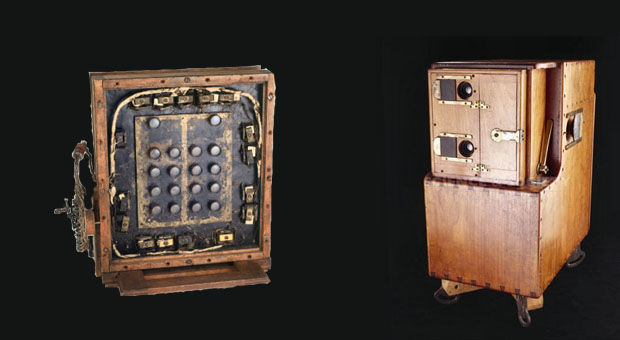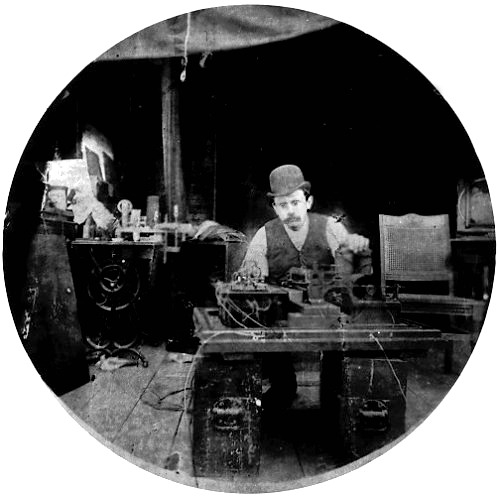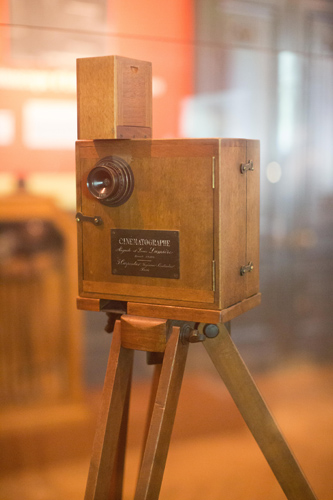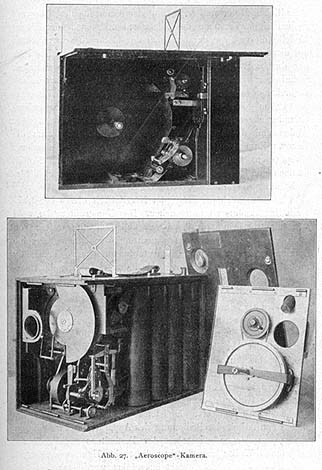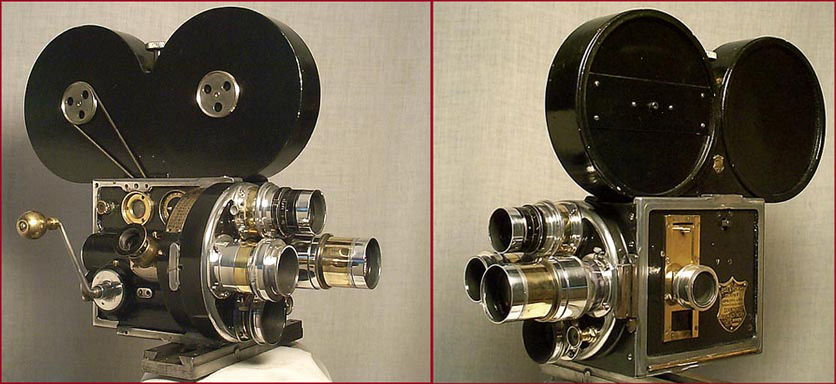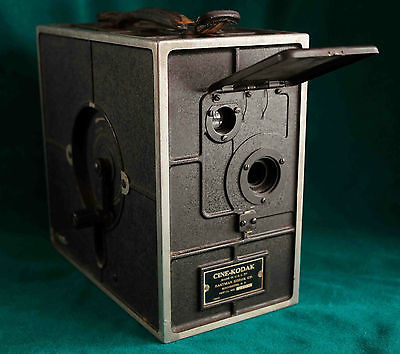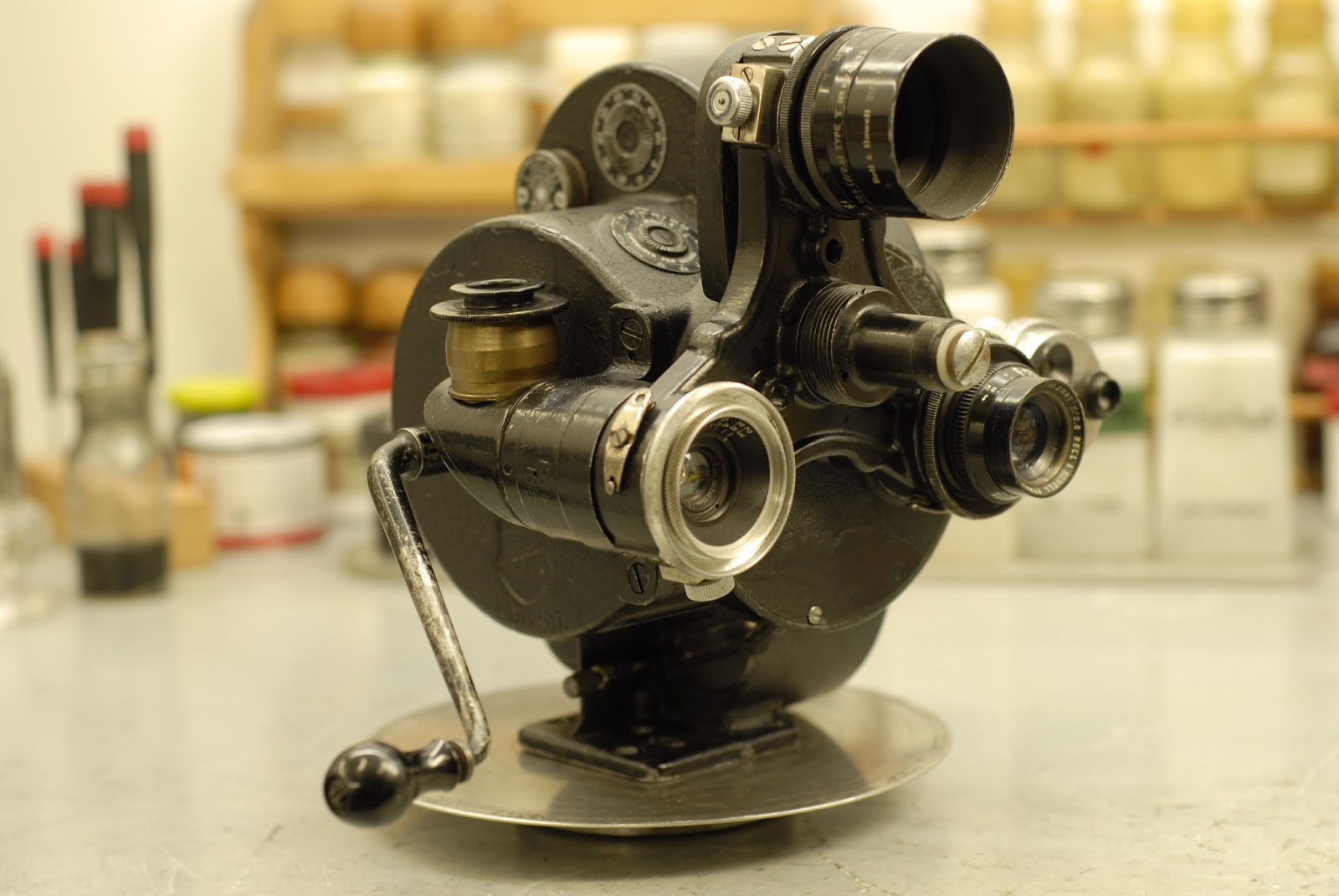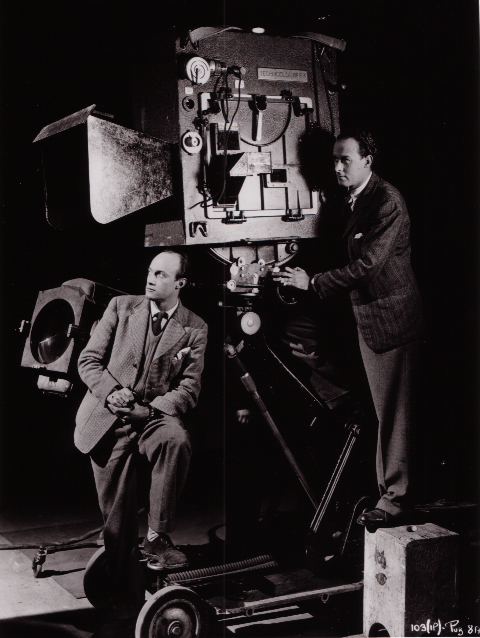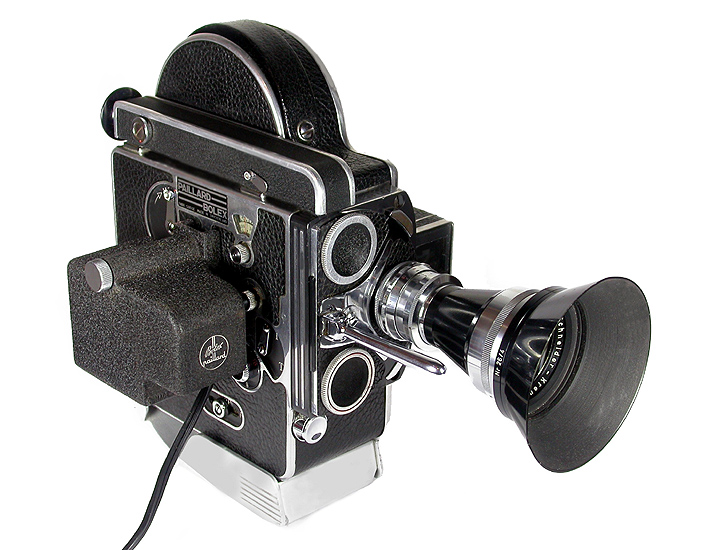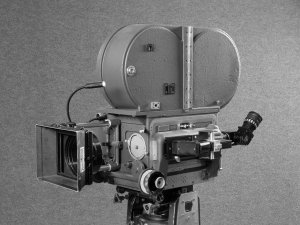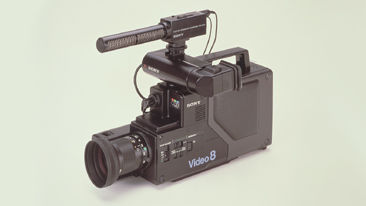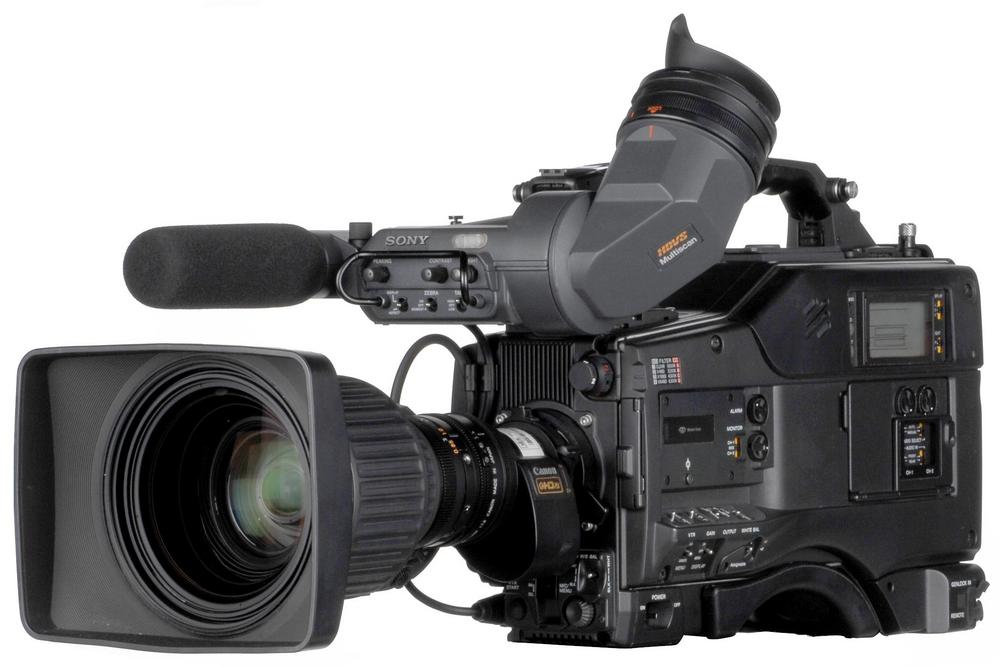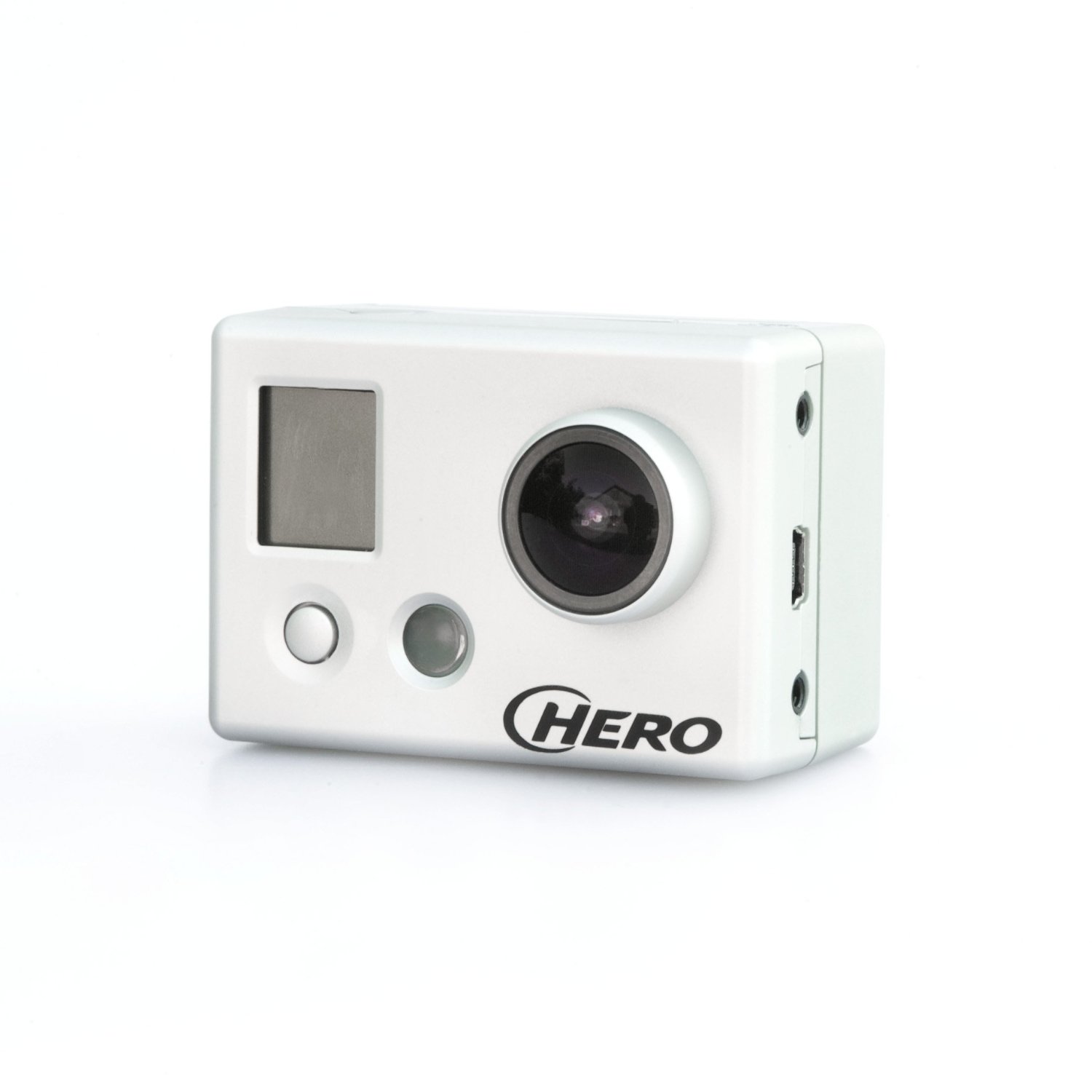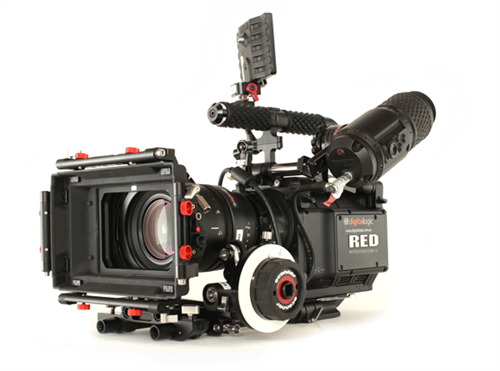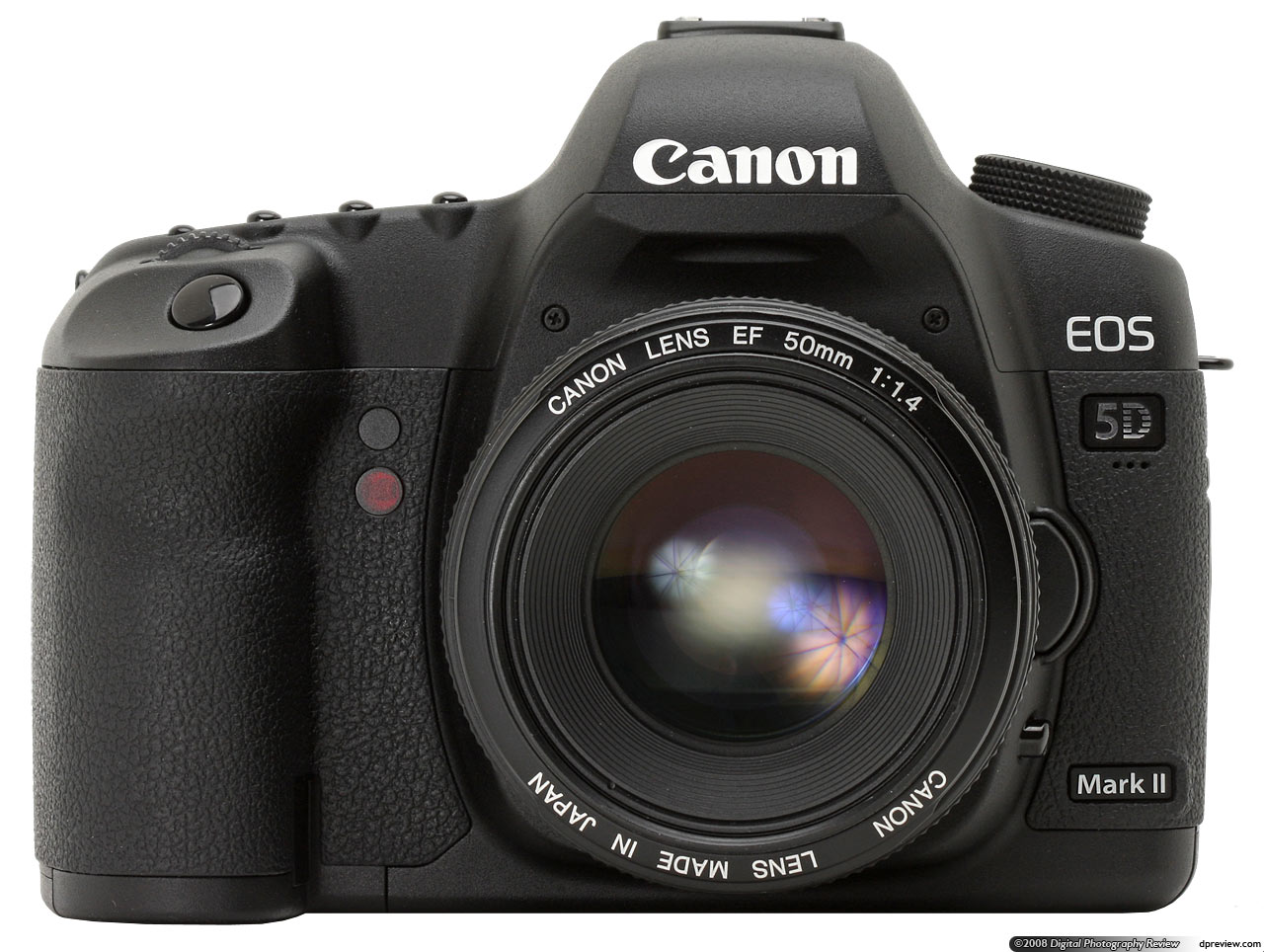The only way to truly understand and appreciate the leaps and bounds movie camera technology has made over the last 126 years is to see each camera in action.
So join us as we take a look at footage from definitive devices that paved the way for film cameras as they exist today.
Due to framerates and Youtube’s compression algorithms, the footage may not appear exactly as recorded, but each clip still provides a clear idea of the camera’s quality, ability, and its influence.
THE VERY FIRST CAMERA
The Year: 1888
The Inventor: Louis Le Prince.
The Camera:
The Video: Roundhay Garden Scene.
The Importance:
You may have been told that Thomas Edison or The Lumiere Brothers were responsible for the first movie camera. You were told wrong.
In 1888, a year after patenting a 16-lens camera, French-born inventor Louis Le Prince created the first ever single-lens camera and filmed Roundhay Garden Scene, the oldest known example of film footage. It may be only 2.11 seconds long, but it set a precedent for quality that would last several years.
Less than two years later, Le Prince mysteriously disappeared. Edison tried to claim the invention, leading many to believe that Le Prince was assassinated before he could patent the camera.
THE KINETOGRAPH
The Year: 1891
The Inventor: William Kennedy Laurie Dickson, an employee of Thomas Edison.
The Camera:
The Video: Monkeyshines, No. 1
The Importance:
Edison’s camera would not arrive until 1891, three years after Le Prince’s efforts. Though this footage was shot for test purposes only, and is therefore out of focus, the most important element is the fluidity with which the subject moves. Both films were shot at 12 frames per second, but the electric motor and sprocketed film of the Kinetograph allowed smoother frame exposures, providing more natural motion.
The downside, as can be seen in the image above, was the camera’s resulting bulkiness.
THE CINEMATOGRAPH
The Year: 1894
The Inventor: The Lumiere Brothers.
The Camera:
The Video: Workers Leaving the Lumiere Factory.
The Importance:
Remarkably portable, and shooting on 35mm film, the Lumiere Brothers’ Cinematographe set a standard for movie cameras upon its creation.
Workers Leaving the Lumiere Factory was the first film shot on the camera. It runs for 50 seconds, and the resulting film reel is 17 metres in length.
Around this same time, firms began opening up around the world to manufacture movie cameras for a variety of customers.
THE AEROSCOPE
The Year: 1909-1911
The Inventor: Kazimierz Prószyński.
The Camera:
The Video: Footage starts at 59 second mark.
https://youtu.be/ONCpppG7bMU?t=59
The Importance:
Released around 1910, the Aeroscope became the first hand-held camera. It did not require the videographer to crank a handle to record, allowing them to stabilise and focus with both hands. It was primarily used by the military in World War I; little footage remains.
THE 2709 STANDARD
The Year: 1912
The Inventor: Bell & Howell
The Camera:
The Video: Charlie Chalpin’s The Kid.
https://www.youtube.com/watch?v=DE2R7s5SCSQ
The Importance:
The ‘Standard’ is right.
When Martin and Osa Johnson travelled to Africa, only to have their camera destroyed by mildew and termites, the need for a metal-housed camera became clear. Bell & Howell were the first to design such a model, and within a few years the 2709 was being used by the majority of filmmakers around the world, including Charlie Chaplin, who purchased #227 in 1918.
The camera would be updated and reproduced for another 46 years.
THE CINE-KODAK
The Year: 1923
The Inventor: Eastman Kodak
The Camera:
The Video: Cine-Kodak Series A promotional film.
https://www.youtube.com/watch?v=kh8useNjroo
The Importance:
The Cine-Kodak Series A was the first 16mm movie camera. This change in film stock made the camera cheaper, smaller, and a standard for early adopters in the amateur-filmmaking market. Such cameras would remain in vogue for the next 80 years.
THE EYEMO
The Year: 1925
The Inventor: Bell & Howell
The Camera:
The Video: Stanley Kubrick’s Day of the Fight.
The Importance:
The Eyemo was designed to be all but indestructible, and became a mainstay for newsreel companies in the decades to come. It was also used extensively during World War II by American forces.
THE TECHNICOLOR 3-STRIP
The Year: 1928
The Inventor: Technicolor.
The Camera:
The Video: The Viking.
https://www.youtube.com/watch?v=1Lclmtdq9JU
The Importance:
The 3-Strip camera marked a key moment in Technicolor’s pursuit of the full-colour processing they had been working on for 13 years.
Though it was released at a time when colour film was an expense Hollywood could not afford during the Great Depression, the 3-Strip would lead the resurgence several years later thanks to its vibrant palette, a result of its ability to expose three separate negatives simultaneously to properly capture the spectrum.
THE BOLEX H-16
The Year: 1933
The Inventor: Bolex
The Camera:
The Video: Alone in the Wilderness.
The Importance:
The Bolex is said to have singlehandedly launched the independent film industry. Directors including Darren Aronofsky, Christopher Nolan, and Peter Jackson all made their first films with the Bolex H-16 or later models.
THE PANAFLEX
The Year: 1972
The Inventor: Panavision
The Camera:
The Video: Steven Spielberg’s The Sugarland Express.
The Importance:
The Panaflex, released after four years of research and development, marked a major step forward for the film industry. How? Because it ran completely silent. No longer did the sound department have to develop cumbersome rigs to keep their microphones away from the churning camera motors; they could be right in the thick of the action.
THE SONY CCD-V8 HANDYCAM
The Year: 1985
The Inventor: Sony.
The Camera:
The Video: Test footage.
The Importance:
The Sony CCD-V8 marked the introduction of direct-to-VHS recording for the home movie marketplace. The quality was poor, but its ease of use made it a staple until the digital era dawned in the 2000s.
THE SONY HDW-F900
The Year: 1999
The Inventor: Sony.
The Camera:
The Video: Robert Rodriguez’s Once Upon a Time in Mexico.
The Importance:
The world’s very first high definition digital video camera, the Sony HDW-F900 was actually developed to allow George Lucas to make Star Wars: Episode II – Attack of the Clones the first ever, fully-digitally shot film. However, Rodriguez saw the camera while at LucasArts Studios working on sound editing for Spy Kids, and managed to release his movie first due to the Screen Actors Guild strike.
THE GOPRO DIGITAL HERO
The Year: 2006
The Inventor: Nick Woodman.
The Camera:
The Video: The Introduction of GoPro Digital Hero.
The Importance:
The original GoPro Digital Hero could only record 10 seconds of video, and wasn’t high definition, but it filled a gaping hole in the consumer market. It generated $800,000 in its first year, before revenue quadrupled to $3.4 million in 2007.
THE RED ONE
The Year: 2007
The Inventor: Red Digital Cinema Camera Company.
The Camera:
The Video: Combat Rescue. Switch to 4K resolution for best experience.
The Importance:
As filmmakers were faced with the decision of abandoning film for digital video, RED Camera Company appeared on the scene. Their first camera, the RED One, shot in 4K resolution, delivering a quality that traditional mediums simply could not match.
It’s innovative post-production software also allowed editors to manipulate the footage without altering the original clips, offering greater flexibility as a result.
THE CANON 5D MK II
The Year: 2008
The Inventor: Canon.
The Camera:
The Video: Promotional Video.
The Importance:
As the Bolex had done previously, Canon’s 5D Mk 11 – the first SLR camera to offer digital video shooting – revolutionised independent filmmaking, and removed one of the last barriers between emerging artists and professional equipment: price.

